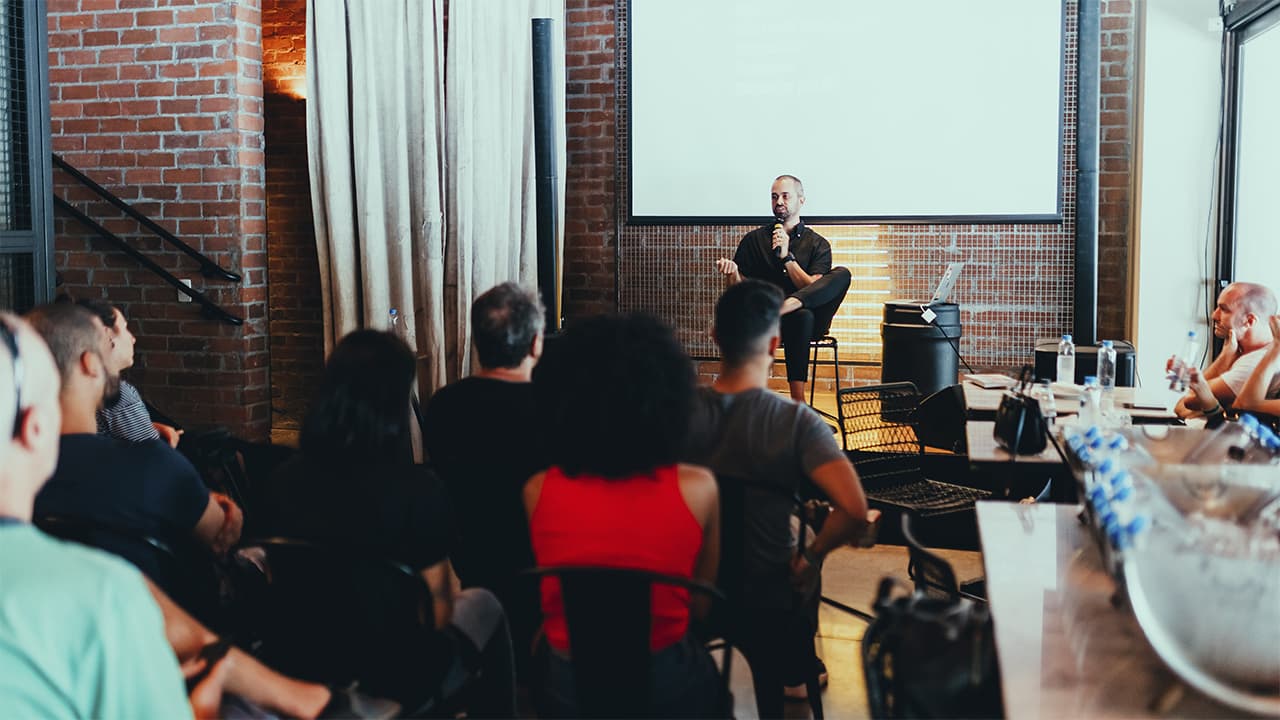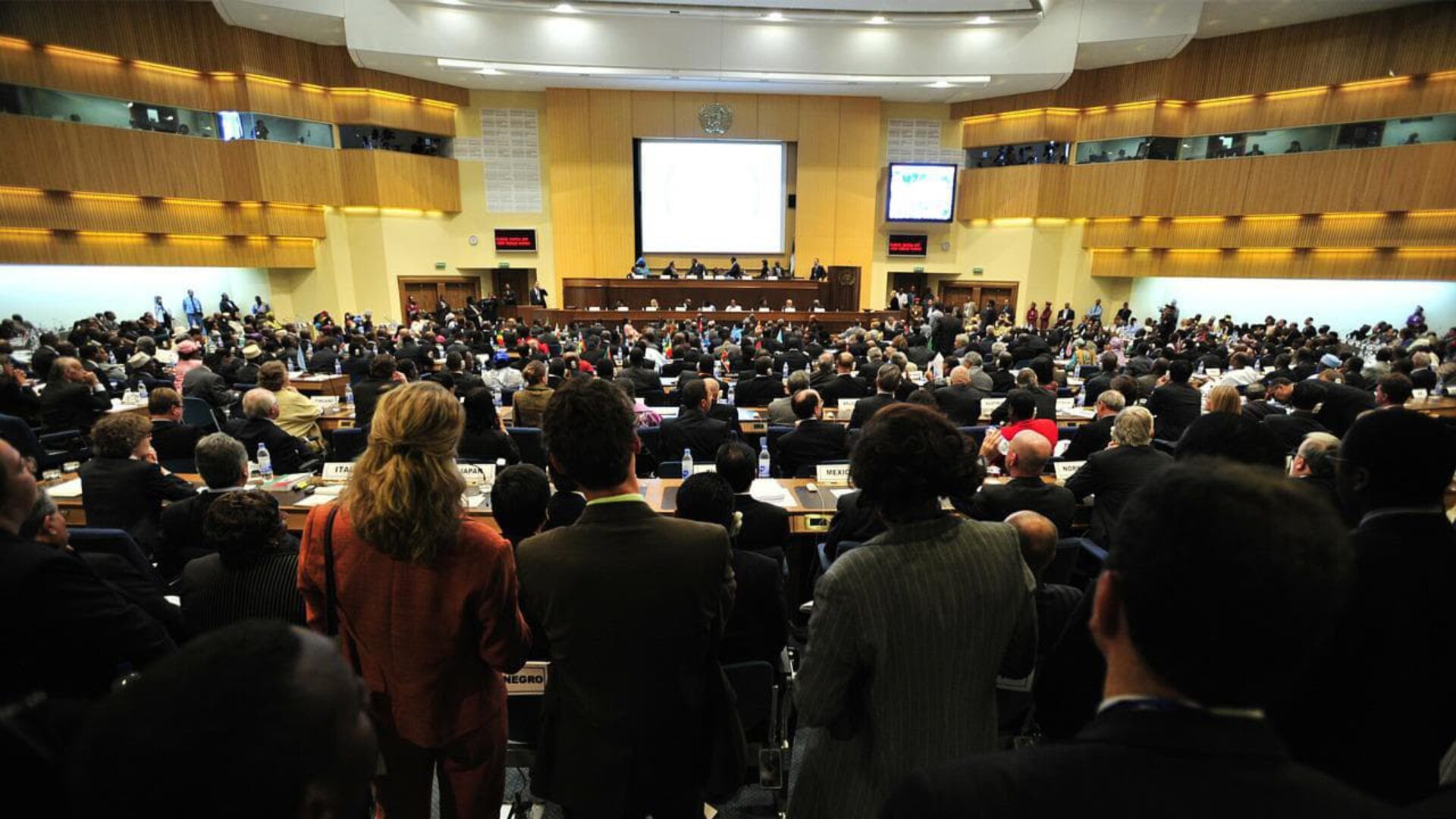
“Shared consumption” (or “sharing economy”) is a new global trend that has led, for example, to Uber, Airbnb and Ebay. It is an economic ecosystem that is built around the interaction of services and resources. This collaboration permeates all business processes. Collaborative consumption has enormous potential. It will change the way we communicate, produce, consume and engage, affecting all aspects of life.
This is why these events are the new generation of events. The impact of this trend on our industry is a fait accompli. Today’s events are focused on communication between participants, so they can share their knowledge with each other and interact in a more informal setting. As a consequence, there are new formats of events. Aquariums, non-conference techniques, open space technology, and Pecha Kucha are just small examples of events of the future that take us back to our roots, when we would gather around a campfire to talk, dance, and create something impressive. And today it’s still a great vehicle for learning and inspiration.
The Aquarium
What’s the point of the format? A small group of people discussing some hot topic in front of a large audience. In classic aquariums, any participant can join a small group and join the discussion. This is a very effective format for discussing trending topics and bringing out different points of view. Great if the small group is made up of public and private sector leaders, and the audience is made up of employees and ordinary citizens. Aquaria makes the decision-making process transparent, builds trust, and simplifies complex issues.
How to use the format
- To create an “aquarium,” place 5-8 chairs in a circle.
- For the audience, place chairs in concentric circles around the fishbowl.
- Select the panelists and seat them in the inner circle.
- The moderator announces the topic of discussion and the inner circle starts it.
- In the “open” version of the aquarium, some of the chairs in the inner circle remain unoccupied, and anyone from the large audience can take that seat and join the discussion.
- In the “closed” version, the discussion participants stay inside the circle until it is over. When time is up, they leave the fishbowl and members of the large circle audience take their seats and begin the discussion.
Duration: about 1.5 hours
What is this format suitable for?
- As an alternative to traditional debates
- As an alternative to panel discussions
- To get the audience to participate
- To get questions on tough issues
- To avoid a boring lecture format
PechaKucha
PechaKucha or Pecha Kucha is a mode of presentation in which you must present 20 slides in 20 seconds each (6 minutes and 40 seconds total). This makes the presentation succinct, dynamic, and to the point. Format became incredibly popular around the world and is used not only in the creative sphere, in which it was born, but also suitable for various topics in the event-industry.
How to use the format
Typically, PechaKucha consists of 8-14 individual presentations. Each should have a maximum of 20 slides, each of which should be presented in a maximum of 20 seconds. PechaKucha is usually held in unusual places, such as bars, clubs, studios, universities, temples, beaches, or even caves. The time of the event is late in the evening. Usually accompanied by drinks. And while PechaKucha was invented to discuss design, architecture, photography, and art, the format is actively used for research projects, student dissertations, hobby discussions, travel itineraries, and various stories. PechaKucha is characterized by a large stage, a large screen for presentations, and a visible timer to keep track of time.
Duration: Approximately 1.5 hours.
What is this format good for?
- Alternative to traditional presentations
- Very useful for topics that people like to talk about a lot
- To maintain a more informal and fun atmosphere
- To bring people from the same field together
- To encourage networking and introductions
Open Space Technology
This format is designed to reach agreement on difficult issues. Suitable for large groups (over 2000 participants) and small groups (less than 10) Gives good results if the event takes place over 1-2 related days. The main task of the moderator is to introduce the participants to the problem and explain the peculiarities of the format. After that, participants create their own schedule and set the pace of the event.
How to use the format
This format has a fairly strict structure, although it depends on the profile of the participants and their disposition. However, no one will tell you exactly how to use Open Space technology. But the result is always guaranteed. But if you plan to use this format, make sure that you:
- Have booked a suitably sized open space
- Prepared a sufficient number of chairs and seats
- Have prepared pencils and paper for participants
- Have invited an experienced moderator
Duration: 1-2 days
Why use this format?
- When you need to discuss a complex issue, to bring all the stakeholders together in one place.
- For strategic planning: to identify goals and plan further actions.
- When there is a need to share knowledge and experience.
- When you need a group discussion of a burning issue.
- When communication between different groups of people needs to be organized
- For team building through discussion and communication.
Unconferences
The purpose of unconferences is to facilitate the exchange of experiences and knowledge. Before the main event, all participants get together and discuss their next steps in Open Space format (as described above). Therefore, as such, there is no manual for non-conferences either. All the action is created by the participants themselves. The distinguishing feature of this format is that the course of action and the schedule of the event are invented by the participants themselves, and anyone can propose their own session. There is no voting, no option to cancel or not accept any idea. All suggested sessions are taken into account. Thus, several sessions are created, and participants can move seamlessly between them.
How to use the format
- For non-conferences, all you need to do is find the right place and topic for the discussion
- Gather the panelists together, tell them about the topic, and let them come up with their own follow-up
- Each creator of a session is free to choose the location and format
- Each participant may move easily from one session to the next
- It is helpful if the session creator has a whiteboard, projector, pencils and paper.
- Participants should not be evenly distributed across sessions
- Each session should have a limited amount of time
- At the end of the non-conference, bring the participants together and offer them a number of gifts. Have everyone choose one gift for the participant who most deserved it during the sessions. Ask for arguments for their choice.
Duration: 1 day
What is this format good for?
- To make the atmosphere more informal.
- Not to spoil the results with traditional norms and knowledge, but to generate new ideas.
- To get rid of the status quo and dive into something unknown and unfamiliar
World Café.
This is a meeting format that is a structured process of communication, enriched by the knowledge of the participants. Usually people are divided into groups of 4-5 people who sit around a round table. The atmosphere is reminiscent of the spirit of a café. The meeting begins with a 20-minute discussion of a given topic. After that, one member of each table moves on to another group. The speaker of the other table greets the newcomer and tells him or her what conclusions his or her group has reached.
The participants have a series of similar conversations, and each time they bring with them the knowledge and ideas of the other groups. In this way, everyone is enriched by the insights of others. The World Café is open to large and small groups of 12 tables or more than a thousand. The format has clear principles:
- Work out the context.
- Create a welcoming environment.
- Explore issues that really mean something
- Encourage everyone’s input.
- Connect different points of view
- Listen to ideas
- Share collective discoveries
How to use the format
- Choose an informal setting for World Café
- Prepare 4-5 round tables
- Have pens, markers, paper and other stationery available to stimulate creative discussion
- Greet all participants warmly at the beginning and explain the topic and context of the discussion clearly
- Divide participants into groups and begin the first round of discussions
- Each round should last 20 minutes. After the round, the groups exchange one participant. Each one is briefly told the outcome of the previous discussion.
- After a couple of rounds, a representative from each group shares with all participants the information they received in their group.
Duration: several hours
What is this format good for?
- For participants who share a common interest or want to solve a common problem.
- For events that require a knowledge exchange between participants.
- To predict future trends in a certain context.
- To solve issues in an informal atmosphere
All meeting formats described above have great potential as they all reflect the trends of the times we are living in.
